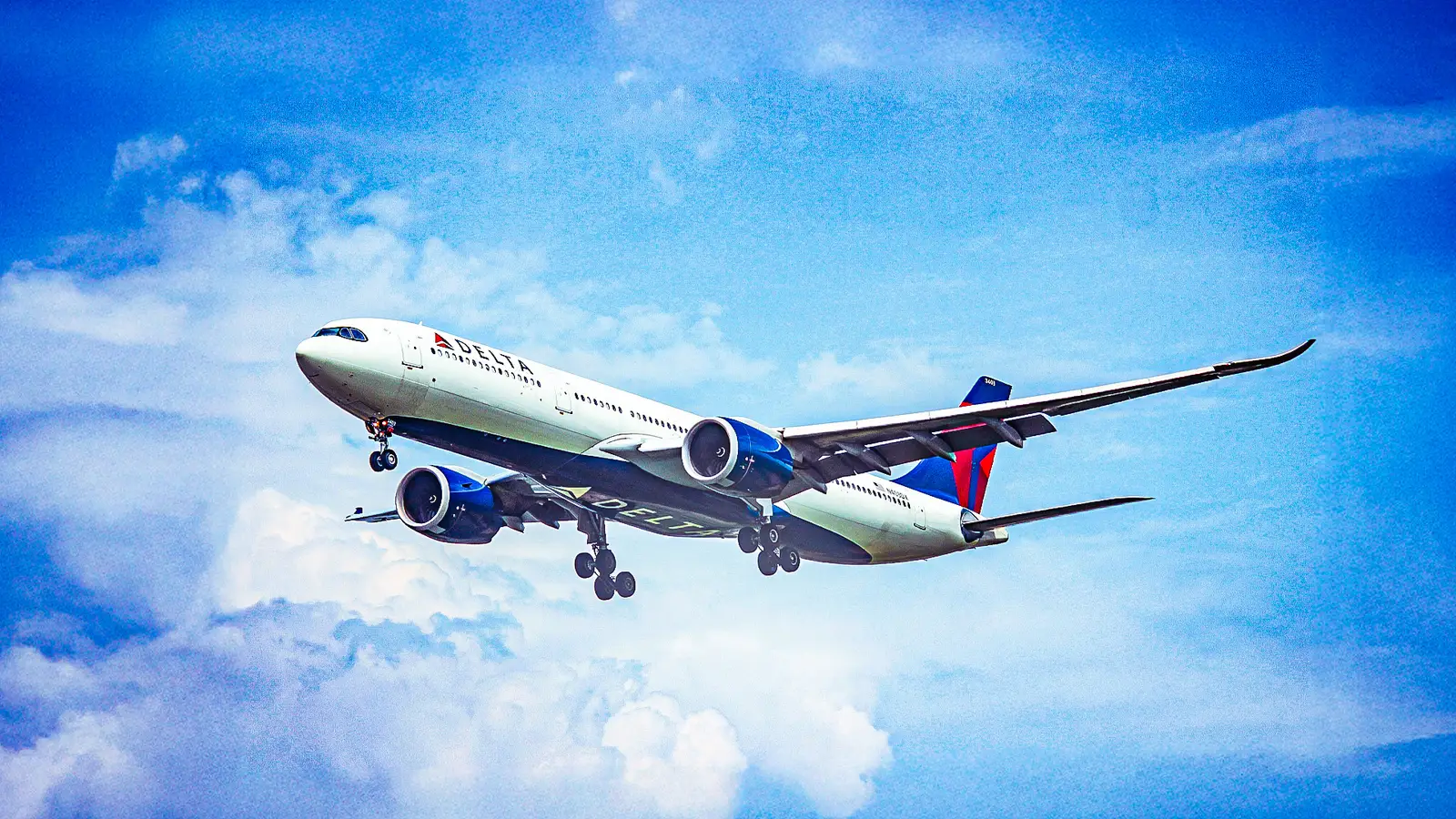Copyright Simple Flying

Delta Air Lines’ Airbus A330-900neo fleet continues to stretch its wings across the Atlantic and the Pacific, powering some of the carrier’s most demanding and efficient intercontinental services. The A330-900neo, part of Airbus’s new-generation widebody family, combines Rolls-Royce Trent 7000 engines, aerodynamic refinements, and the latest Airspace Cabin design that makes it perfectly suited for markets requiring both long range and passenger comfort. Delta’s 2025 schedule for the Airbus A330-900neo demonstrates how central the aircraft has become to its global network strategy. The jet’s longest missions—covering more than 6,000 miles—connect secondary US hubs with major international cities while keeping operating costs low. Data provided by global aviation analytics company, Cirium, show where Delta’s A330-900neo fleet flies farthest, blending range and efficiency across Asia, Africa, and Europe. Seattle To Taipei Defines Transpacific Endurance Seattle–Taipei is Delta’s longest scheduled A330-900neo service in 2025, measuring about 6,074 miles each way. According to Cirium data, the airline will operate 87 westbound and 89 eastbound flights, offering roughly 25,000 seats per direction. The 13-hour Pacific sector highlights why the type has become Delta’s preferred aircraft for thinner Asian markets that do not justify the larger A350-900. The A330-900neo delivers strong economics, using around 14 percent less fuel per seat than the older A330-300. Seattle serves as Delta’s principal Pacific gateway, linking the US Northwest with Asia’s technology and tourism centers. Taipei complements existing Delta links to Tokyo Haneda and Incheon, capturing a mix of leisure and business travel. The 281-seat cabin includes 29 Delta One Suites, 28 Premium Select seats, and a large Main Cabin—an arrangement that matches demand on long-range transpacific routes. Performance data show that even at full loads, the Trent 7000 engines provide smooth takeoffs from Seattle’s long runway and steady climb rates over the Pacific. Tailwinds on the return shorten flight times to under 12 hours. Cabin crews report quieter conditions and improved humidity, enhancing comfort on these extended missions. The Taipei service typifies Delta’s long-haul philosophy, deploying efficient, mid-size widebodies on routes that demand both reach and adaptability. Haneda To Minneapolis Connects Two Strategic Worlds Spanning 5,982 miles, the Tokyo Haneda–Minneapolis connection ranks as Delta’s second-longest A330-900neo route. The flight links Japan’s prime international hub with Delta’s Upper Midwest base, offering nonstop access for business and leisure travelers alike. Cirium records about 175 annual flights carrying nearly 49,000 passengers in both directions. This operation reflects Delta’s commitment to connecting non-coastal US cities directly to Asia. The A330-900neo replaced the fuel-hungry 777-200ER, cutting consumption by roughly 25 percent. Its quieter acoustics meet Tokyo Narita Airport’s strict nighttime noise limits, and ETOPS 330 approval ensures broad diversion options across the North Pacific. Cabin layouts cater to premium traffic from Minnesota’s corporate sector. Delta One Suites and Premium Select cabins are consistently in demand, while a partnership with Korean Air through Seoul expands one-stop access across Asia. Together, the Haneda and Incheon hubs give Delta flexibility that rivals larger competitors. Top Long-Haul Delta A330-900neo Sectors (2025) The average block time is approximately 12 hours westbound and 11 hours eastbound. Despite seasonal headwinds, the A330-900neo maintains punctuality and cost control. Basing several aircraft in Minneapolis and Seattle allows Delta to reach deep into Asia without deploying its flagship A350s unnecessarily. The Haneda–Minneapolis link captures the essence of Delta’s modern long-haul network—long-range reach, balanced capacity, and the ability to sustain premium service from heartland America. Atlanta to Athens Powers Mediterranean Ambitions At roughly 5,700 miles, Atlanta–Athens is Delta’s longest A330-900neo flight to Europe with 315 flights per direction in 2025, generating more than 504 million available seat miles. Operating from March through October, it has become a cornerstone of Delta’s Mediterranean leisure network. The aircraft’s size and range make it an ideal choice for this seasonal but high-yield market. With fewer seats than the A350, the A330-900neo maintains healthy margins even during shoulder months. Premium Select cabins sell out quickly, reflecting growing demand from high-end leisure travelers and the Greek-American community. The aircraft’s size and range make it an ideal choice for this seasonal but high-yield market. With fewer seats than the A350, the A330-900neo maintains healthy margins even during shoulder months. Premium Select cabins sell out quickly, reflecting growing demand from high-end leisure travelers and the Greek-American community. For Delta, Athens symbolizes what the A330-900neo brings to the table: long range, lower emissions, and operating economics that enable sustainable expansion into key leisure markets. Atlanta to Lagos Strengthens Transatlantic Trade Covering 5,843 miles, Atlanta– Lagos Airport is Delta’s cornerstone connection to West Africa. The schedule shows 42 round-trips each year, equal to about 69 million available seat miles per direction. Replacing the 767-300ER with the A330-900neo brought higher reliability, more cargo space, and a step-change in onboard comfort. Lagos remains an essential market for both business travelers and the Nigerian-American community. Cargo volumes are especially important, with westbound flights carrying perishables and electronics, while eastbound flights are filled with machinery and pharmaceuticals. Freight revenue can exceed one-fifth of the route’s total income. Despite tropical heat and long stage length, operational reliability stays above 98 percent. Favorable Atlantic tailwinds assist westbound segments, helping maintain fuel efficiency and schedule precision. Flight crews note that the A330-900neo’s wing design and engine thrust provide reassuring margins in high-density conditions. Delta’s sustained focus on West Africa distinguishes it from the US rivals. Where other carriers prioritize Johannesburg or Cape Town, Delta has cultivated consistency in Lagos and Accra, supporting trade and diaspora links. The A330-900neo’s capacity is ideally sized to maintain profitability throughout seasonal fluctuations. Atlanta–Lagos demonstrates how Delta applies right-sized aircraft to strategically vital emerging markets, preserving connectivity while controlling operating costs. Seattle To Shanghai Drives Pacific Recovery Seattle–Shanghai covers 5,722 miles and stands out for its high frequency rather than distance. Data shows 366 flights each way in 2025—essentially a daily round-trip and the largest single A330-900neo capacity deployment in Delta’s network. The revival of this corridor signals Delta’s confidence in the recovery of US–China demand. The A330-900neo’s cabin size fits the route perfectly, enabling daily service with strong load factors. Its lighter composite structure and improved aerodynamics translate directly to better fuel economy on the 12-to-13-hour crossing. Seattle’s role as Delta’s primary Pacific base continues to expand. The Shanghai link complements flights to Tokyo and Seoul, while cooperation with China Eastern Airlines extends Delta’s reach across China. Passengers enjoy convenient one-stop connections to dozens of mainland cities. In service, the aircraft regularly records block times exceeding 12 hours, with superior climb performance compared to earlier A330 models. Crews praise the quieter environment and lower fatigue levels after long rotations. The passenger experience reflects Delta’s broader focus on comfort, reliability, and sustainability. Seattle–Shanghai underlines Delta’s disciplined approach to Asia—using advanced, efficient wide-bodies to sustain daily connectivity while balancing market volatility with precise capacity planning. The A330-900neo Shapes Delta’s Global Future The A330-900neo has become a pillar of Delta’s global growth plan, bridging the gap between medium- and ultra-long-haul aircraft. By 2025, Delta will operate more than 28 of the type, with further deliveries scheduled into 2026. The jet supports Delta’s carbon-reduction commitments and simplifies fleet operations across both Atlantic and Pacific networks. With a maximum takeoff weight of 251 tonnes and a range of nearly 7,200 miles, it gives Delta the ability to serve every inhabited continent except Australia with remarkable reliability. From an operational standpoint, the A330-900neo enables Delta to tailor capacity precisely to market demand. It achieves roughly 14 percent better fuel burn per seat than the A330-300 and reduces maintenance costs through modern systems and lightweight materials. Passengers benefit from quieter cabins, larger bins, and improved air quality, aligning with Delta’s emphasis on premium comfort. For the airline, flexibility is key—this aircraft can operate dense transatlantic sectors one day and long Pacific routes the next with minimal adjustment. Analysts expect the A330-900neo to remain central to Delta’s long-haul network for at least another decade. Its strong economics and cockpit commonality with older A330 variants simplify pilot training and scheduling. As global travel stabilizes, Delta’s efficient use of the A330-900neo across continents reinforces its reputation as one of the world’s most strategically disciplined carriers.



